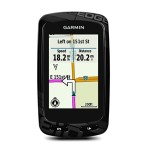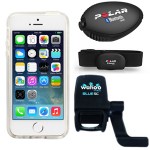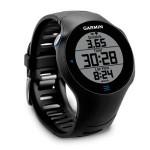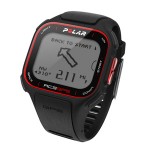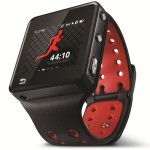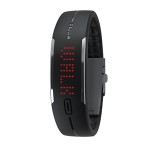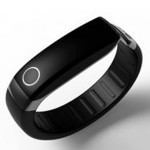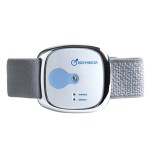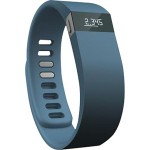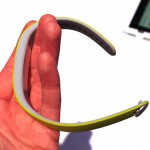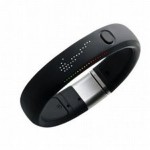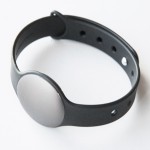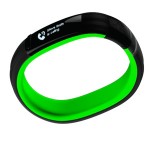Review of Fitness Performance Monitors: wearables, fitnessbands, and activity trackers
In the beginning there was Garmin. Now we have an entire industry and it is changing so rapidly that we cant even seem to decide on a name for this category of device! Is it a fitnesband, a smarttracker, a wearable, an activity tracker, or a bio-performance monitor? Every week there seems to be another major competitor entering the market:
- Nike FuelBand
- Fitbit Force
- Garmin Edge 810 and ForeRunner 610
- Misfit Shine
- LG LifeBand Touch
- Sony Core
- Razer Nabu SmartBand
- Pebble Steel
- Under Armor Band
- BodyMedia
- Motoactv
- Polar Loop, RC3 GPS
- iPhone/Android + Polar H7 bluetooth heart rate and Polar stride footpod sensor
How do we make sense of all this stuff? This article is an overview of the different solutions available for fitness performance tracking and what solutions make sense for which people. In later articles I will do reviews of above devices as well as the software apps – Strava, mapmyrun, runkeepter, etc. If you want skip right to the recommendations, feel free.
The Basics
These devices are supposed to help us improve our health and increase our athletic performance. Skipping the hype – many of these devices are just sexy step-counters. Step counting is important but it has significant limitations. Many people in this exciting industry seem to have forgotten that engineering pearl of wisdom – “garbage in, garbage out“. This means that your results are only as good as the information you base them on. Wearables and smart phone apps are wonderful but for them to produce useful information about your fitness requires that they get accurate information about your body. I know you can get clever smart phone apps that calculate your heart rate by just putting your finger over the camera lens but I tried them and only got an accurate reading about 1 out of 10 tries. You cant use inaccurate information like that if you are going to have meaningful results! The accelerometers found in smart phones and wearables are great but there is a limit to the information you can obtain from them. Later we will look at all the various sensors needed for performance monitoring but first, lets start with advantages and disadvantages of various solutions and work backward.
Advantages of various solutions
| SOLUTION | EXAMPLE | COST | ADVANTAGES | DISADVANTAGES |
| band wearable | Fitbit, FuelBand | $100 | Cheap, light weight, attractive, sexy, and easy to use. Perfect for people trying to lose weight and get in shape. | Only counts steps |
| smartphone + bluetooth sensors | iPhone + Polar H7 and Polar Stride Sensor | $100 | Incredibly versatile and inexpensive if you already have a smart phone. Big, easy to read screen. Perfect for recreational and amateur athletes. Cool smartphone apps that integrate, nutrition, exercise done, and GPS routes all into one seamless package. Free maps and routing thru your phone. Most people cycle or run with a phone or music player anyway, this solution takes advantage of a device you are already carrying. A la carte solution means that when you upgrade your phone, you can continue to use all your bluetooth sensors on your new phone. | Battery life of just a few hours. GPS route guidance only if you have enough bars .. unless you have offline maps available. Heavy. |
| Integrated running computers | Polar RC3 GPS Garmin ForeRunner 610 | $300 | GPS, heart rate monitor, and stride sensor all on your wrist. If you run in races then you need one of these. | Heavy and clunky looking. Very short battery life. Garmin is hard to use. |
| Integrated cycling computers | Garmin Edge 810 | $700 | Small, light, long battery life, annunciated turn by turn route guidance, no wireless data connection required. Professional cyclists need these as do cyclists who take multi-day trips. Very detailed maps available for all of North America, Europe, Australia. | Tiny screen is hard to read. Complicated to use. GPS lock slow, maps are expensive. |
The Sensors
We got ahead of ourselves, its easy to get lured into how sexy these things are but lets look at what is actually measured and what that data is good for:
| SENSOR | MEASURES | REQUIRED FOR |
| motion sensor (on foot, wrist) | steps taken | basic fitness improvement, all runners |
| GPS | speed and distance | recreational athletes and pros |
| temperature | metabolism | TBD |
| skin resistance | amount of sweat | TBD |
| heart rate | exercise level | recreational athletes and professionals |
| rpm and cadence | precise biking speed | triathletes and cyclists |
| pedal force | precise power output | professional cyclists |
How many steps have I taken?
The #1 best way to improve health, decrease stress, and lose weight is to walk every day. Thats why counting steps is so important and its why many companies give their employees cash incentives to take a minimum number of steps each day. A typical program would be $300 to walk 7,000 steps for 100 days in each quarter. For 95% of the world who are just interested in getting healthy and losing weight, all they need is a simple motion sensor that counts steps. The reason these wearables are so exciting is that they are an all-in-one, easy to use system you can wear that tell you how many steps you have taken – no need to fight with syncing, uploading, or anything else. A quick glance tells you how you are doing. You don’t even need to buy a wearable for this if you have a smartphone, you can just use an app that uses the smart phones integrated motion sensor!
How hard am I exercising?
The most important sensor of all for monitoring and improving athletic performance is the heart rate monitor! These devices cost about $50 and are absolutely essential for all athletes, recreational or professional. The heart rate monitor tells you rather precisely how intensely you are exercising as a percent of your maximum effort. This is critical in training to know how hard to push yourself. Exert too much early in the exercise and you konk out. Don’t exert enough and you leave money on the table so to speak. The heart rate monitor can be used to optimize performance and optimize training sessions. It is essential that the heart rate monitor be accurate and from my experience, the only accurate device is the chest strap monitor. If you buy only one sensor for your smart phone, make it a heart rate monitor!
Then there are the power meters, they are what they sound like. They measure how much power your body is producing, as in “horsepower”. Right now, these are only available for cyclists and they are quite expensive, over a thousand dollars. The measure the force that the foot exerts on the pedal and for how long that force is applied then calculate the power from that. Its only a matter of time before these power meters are available as foot strike sensors for runners as well. Right now they are just too expensive for anyone other than pros to contemplate so we don’t need to worry. Honestly, I am not sure what exactly these buy you in performance over using a heart rate monitor.
How fast am I going?
Various sensors are needed to accurately measure speed. If you are a runner, you need a footpod which attaches to your shoelaces to keep track of the precise number of steps. These footpods typically cost about $50. You can calibrate these stride sensors at your neighborhood track which then allows you to get a pretty accurate speed just from the number of steps. If you are a cyclist you need a RPM sensor for the wheel and a cadence sensor for the pedals. A similar calibration procedure can be used with the wheel RPM sensor to get a fairly accurate speed even without GPS. Whether you are a runner or a cyclist, a must have is an integrated GPS to know the distances and speeds accurately. The stride length taken by a runner at the beginning of a run when they are fresh is often longer than their stride at the end of the run when they are tired and the only way to get true speed is to have a GPS. Same with bikes, you can count revolutions of the tires but as tire pressure changes, distance errors mount. To really know exactly how fast you are going you need both GPS and the stride/RPM measurements.
How many calories am I burning off?
You can calculate calories burned based upon heart rate and duration of exercise but there are other ways as well. A less invasive way to measure how many calories you are burning off is with skin resistance (sweat) and temperature sensors. As far as I know, BodyMedia is the only company that has these so far. What they claim, and they seem to have studies that back this up, is that by measuring the heat put off by the body and the skin resistance (amount of sweat) that they can accurately calculate energy expenditure. When you are just measuring steps, you can only get a rough idea of energy expended because you don’t know how big the steps were or if they were up stairs or just a foot swinging from a park bench. Adding temp and sweat sensors gives you even better knowledge, they claim to be able to get within 5% which is pretty darn good. The jury is still out on this one, time will tell if the heat and sweat sensors provide useful information or not.
Hardware and connections
The old way to do hardware was to have everything integrated into a proprietary package, this is still the approach of Garmin today with their Edge bicycle computers and their ForeRunner running watches. GPS, heart rate, rpm, cadence, power, all in one system. The new way is a la carte, mix and match sensors and use a smart phone as the display and GPS. Both these techniques have their advantages and disadvantages which will will summarize in a moment but first lets talk about connectivity.
While we are on the subject of this subject, lets talk connectivity. You have all these monitors all over your body, shoes, and bike so you obviously cant have wires running between them because of the safety hazard as well as the inconvenience. Garmin has its own wireless protocol called ANT, clever name I must say :) You can actually get a little dongle for a iPhone 4 that plugs in and lets you talk to your Garmin sensors .. but not the iPhone 5. The rest of the world uses bluetooth to talk to the sensors and the writing is on the wall, Garmin lost its chance to be a market leader in this arena and now will have to convert their sensors to bluetooth if they want to stay in the game. (my humble analysis).
<
Recommendations
- If you just want to get healthier and lose weight, get a step counter device like the Polar Loop, FitBit, or FuelBand, or just an app for your smart phone that counts steps. I highly recommend the Polar loop
because you can turn it into a serious performance monitor by adding the optional Polar H7 heart rate monitor
.
- If you consider yourself an athlete and have a smartphone then get a bluetooth Polar H7 heart rate monitor
. Get a Wahoo blue SC
sensor for your bike if you are a cyclist and a polar stride foodpod
for your shoe if you are a runner. With $200 worth of sensors you can get a high powered performance measuring device.
- If you consider yourself an athlete and do not have a smartphone then you will need one of the expensive integrated devices from Garmin or Polar – an Garmin Edge 810
if you are a cyclist and a Garmin ForeRunner 610
or Polar RC3 GPS
, if you are a runner.
- If you are a pro athlete then get the above expensive integrated devices from Garmin or Polar – you cant afford the weight of a smart phone solution.
What does Scooby use?
What do I use? I love my iPhone with its Polar H7 bluetooth heart rate monitor and Polar bluetooth stride sensor for every day training. I only use my Garmin for races and for multi-day bike trips. I will be reviewing the Garmin Edge 810 and the ForeRunner 610 in a later article. I have years of experience with these devices and love to hate them. I curse their horrible software and the hostile user interface on their devices. I curse their expensive add on maps. I curse the small, dim, unreadable display. I get ahead of myself though, I will save that for my Garmin reviews.
Feature Chart
Devices listed from most features to least features

